|
Monday, March 19, 2012
Progress Notes
This year is the sesquicentennial of the American Civil War. The state of Missouri has offered to present a display entitled Divided Loyalties featuring the history of the Civil War in Missouri for organizations such as our museum. Drawing on more than nine million pages of documents and court cases, Divided Loyalties examines the upheaval and uncertainty that characterized Missouri during the Civil War era. The exhibit goes beyond the stories of battles and military strategy to consider the social conflict that permeated the state for the two decades that followed the Kansas Border Wars of the mid-1850s. We have been notified by Greg Olson, Curator of Exhibits and Special Projects at the Missouri State Archives, that the state will provide for our museum the Divided Loyalties display beginning in early June and lasting for about two months. Here is a diagram of what the display includes (photo 01):

01 Civil War Display Floor Plan
Click image for larger view in PDF format
Also, you can refer to the state's website which gives more information about the display.
As noted above, the display also includes depictions of the tumultuous times in the decade following the end of the war when many atrocities occurred among combatants of both sides of the war. One of the most thorough discussions of the mayhem and disunity of the post Civil War era in Miller County was written by Miller County historian Clayton Jenkins in Volume II of his History of Miller County (photo 02).
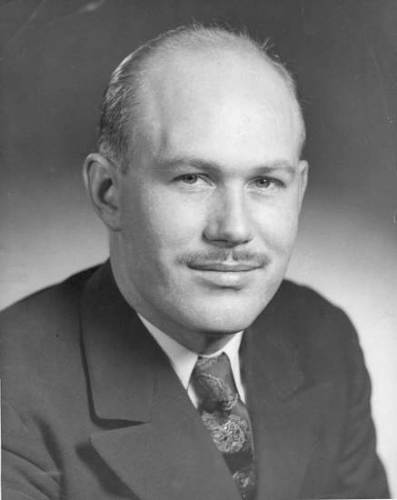
02 Clyde Lee Jenkins
I have selected some of that narrative for this week's Progress Notes which is copied here:
Judge Jenkins’ History of Miller County V2
“Ten Years of Violence”
p. 1
Approximately 1000 men from Miller County took some part in the Civil War. Of these, nearly 700 upheld the Union in militia or regular troops, and about 300 were in the Confederacy, state guard companies, or bushwhacking. The confederate soldiers of the county were mostly in the ranks of General Monroe M. Parsons (photo 03).
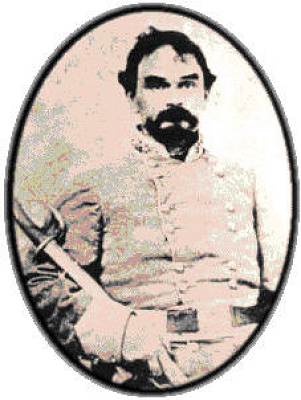
03 General Mosby Monroe Parsons
However, it must be stated here that before the war ceased, many men in the militia or federal forces were former confederates.
Note: More information about General Parsons can be read in this attachment (photo 04):
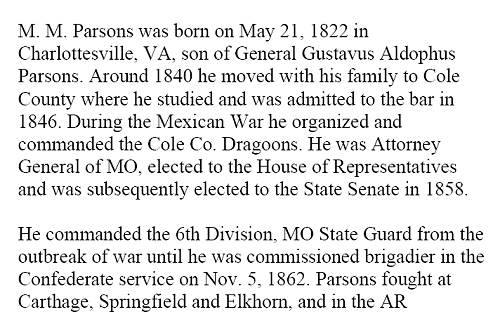
04 General Mosby M. Parsons Bio
Click image to read entire document in PDF format
When hostilities ceased in the spring of 1865, Miller County was a place of divided families, many political factions, and community rivalries. Nothing made sense in the days after Price’s raid through the area, or for approximately ten years afterward. The “Loyal” forces were in the saddle, and persons regarded as rebels or southern sympathizers in any particular, were humiliated, disfranchised, or chased from the county (photo 05).
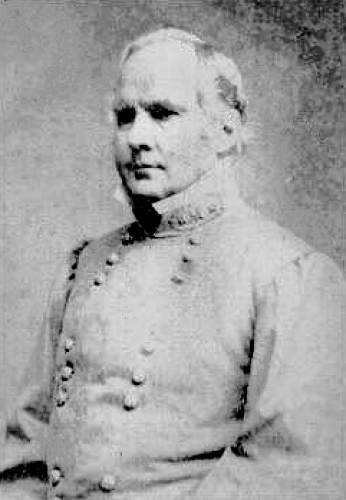
05 General Sterling Price
p. 4
In May, 1866, the Circuit Court was petitioned by many Miller Countians to have their citizenship restored. However, the post war new constitution of the state of Missouri disqualified them from voting at any election or holding any office of honor or trust; but having conducted themselves in every way as good and lawful citizens, they wanted their rights, privileges, and immunities as Citizens of the United States, and the State of Missouri, fully restored to them. A number of petitioners were decreed by the Circuit Court the exercise of Citizenship without taking the oath of loyalty as prescribed by the Constitution due to their special circumstances. For example, most of these men originally were Southern sympathizers originally but changed their minds later and joined the U.S. Military Service. However, problems remained. For example, when southern sympathizers took the oath of loyalty prescribed by the new Constitution of 1865, they were immediately indicted for perjury!
In Richwoods Township the Radicals were very strong. These were extreme Northern sympathizers who held great enmity toward the former Confederates. The Radicals believed the first order of business in Miller County was the stopping of robberies and the killing of peaceable citizens, as in their view depravations were constantly being committed in all parts of the county. The Radicals, believing the Confederates of Miller County responsible for the county’s difficulties, chastised them. However, it would be more than fair if written here the Confederates were not responsible for the county’s difficulties, since many people, unable to make a living, commonly turned robber to obtain subsistence, and this they did in such great numbers, the county was overrun by them.
East and North of Iberia were many Confederates and Southern sympathizers; while to the West and Southwest the Radicals found much strength among the Pennsylvanians having settled in the area before the war. The Confederates and Radicals decided to have it out in the town of Iberia, but the union boys, under Squire John Ferguson, meeting the Confederates on the outskirts of the town, after considerable bantering, withdrew without contest. However, things became so hot for Squire John that, for some time, he sought refuge in a cave, known as the Ferguson” cave to this day.
Note: You can read more about the story of John Ferguson and his cave at this previous Progress Notes.
Here are photos of the Ferguson cave and also of John and Dorcas Ferguson in front of their home (photos 06 and 07):

06 Ferguson Cave on Big Tavern Creek
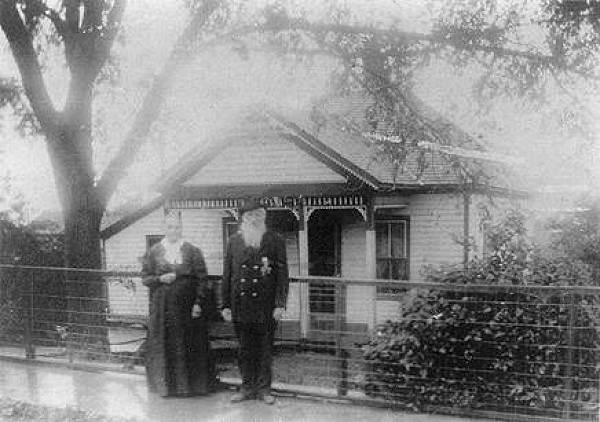
07 John and Dorcas Ferguson in front of Home
On March 3, 1866, at Oakhurst, southwest of Iberia, a Radical meeting resolved Unionists and rebels no longer could live peaceably together in Richwoods township and the Rebels were advised to depart. Many ex Confederates, for fear of their lives, immediately left the Big Richwoods, while others were chased out of the county with force of arms.
p. 9
End of Radical Government
In 1868, the Central Radical Union Republican committee held a mass meeting at Tuscumbia on April 18. The Radical Republicans ruled the county with a rod of iron. They barred all ex Confederates, and Southern sympathizers from the polls, and with the passage of the stringent registry act by the General Assembly in 1868, held complete sway. Anyone having southern tendencies during the rebellion, upon registering to vote, was immediately arrested.
However, eventually, the attorney who prosecuted for the State declared in open Court at Tuscumbia the suits against those accused would be forthwith dismissed upon payment of all the costs in each case. When done, this loosened the hold of the Radical Republicans upon the county enough that another faction gained control of the party.
On September 9, 1871, the Liberal Republicans met at Tuscumbia. Upon organizing, Judge Thomas Scott was elected President (photo 08).
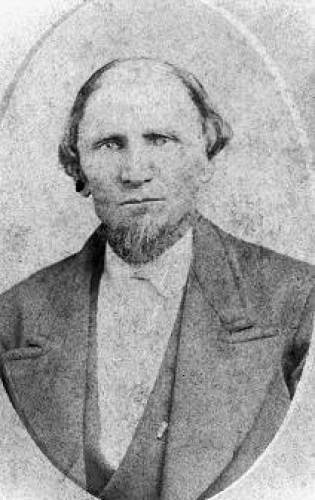
08 Thomas Scott
A Constitutional Amendment, adopted by the people of Missouri in 1870, having abolished the oath of loyalty had allowed the Democrats to challenge the rule of the Republicans in Miller County.
In the election of 1872, ex confederates, and southern sympathizers entered the campaign with vim and vigor. However, under the leadership of William Carroll Brumley, J.M. Hawkins, John Ferguson, Benjamin Capps, and Hazen S. Burlingame, the Republicans fought back (photo 09).
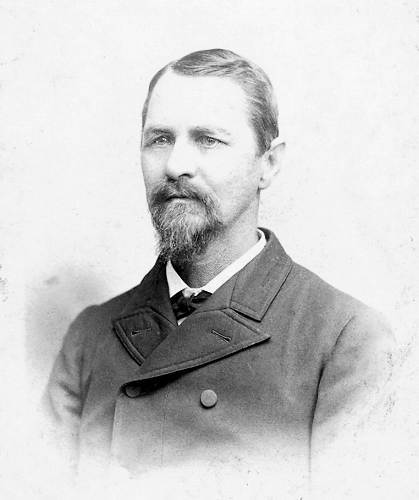
09 James M. Hawkins
Without any doubt, this was the bitterest political contest ever waged in Miller County. There was much fighting among the inhabitants, with “broken noses, and much spilling of blood.” However, the abolishment of the oath of loyalty by the Constitutional Amendment of 1870 as a prerequisite for voting undoubtedly prevented the return of either side to the battlefield.
Two very prominent Miller County citizens left our county after the Civil War because of threats to their lives, one a northern sympathizer and the other a southern sympathizer. They were Thomas Babcoke who fought vigorously during the war for the north, and William Powell Dixon who supported the south (photos 10 and 11).

10 Thomas Babcoke
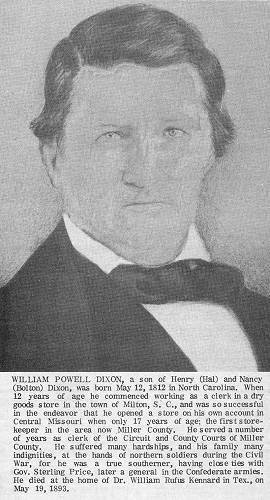
11 William Powell Dixon
Click image for larger view
You can read the story of Thomas Babcoke at this previous Progress Notes and the story of William Powell Dixon at this previous Progress Notes.
Another of those who belatedly may have left Miller County for reasons related to old longstanding grievances going back to the Civil War was William Riley Keeth (photo 12).
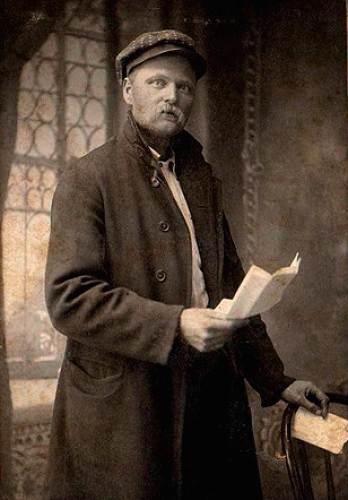
12 William Riley Keeth
He and his family left the Brays Mill area in 1901 for Oklahoma. Later they returned to the Brays area for a short while and then returned to Oklahoma for good by 1920. One of the attractions of Oklahoma was the land rush then occurring in the Indian area where William Riley Keeth acquired land. DeVere Whitaker has written about the plight of some of the post war southern sympathizers of Miller County including the Keeth family.
“They were Southern Sympathizers and that made them second class citizens in Miller County. They could not get credit, or vote for about 12 years after the Civil War, if you did not sign the paper saying you would be loyal to the Union. This paper had to be signed before the War ended. If you signed it later they arrested you as a traitor on a catch 22. By signing it afterwards meant you were not loyal during the War. The Keeths, Whitakers, Wests and most of the people who lived around Brays Mill were Southerners and would not sign. They called the area "Little Richwoods". My G-Grandfather was removed from office because he would not sign. He was Miller County Representative, Sheriff, Collector etc. No one would put up bond money for you if you were a southerner. The 1870 census takers were Union and lots of southern families were left out in that census because of the hatred that still existed. When you found your people again they would sometimes be in another township. If you looked at who their neighbors were you can bet they were in-laws etc. They banded together for protection. After some families got starved and run out, the people at Brays Mill banded together; the Union was at Iberia but they stayed out of "Little Richwoods".
This is why I admire John Ferguson, Miles Carroll and William Carroll Brumley. They were Union but they put their differences aside helped put a stop to this discrimination.”
Events that occurred during the Civil War led to enmities among neighbors that persisted long afterwards. A couple of incidents which occurred in my family are examples. My great great grandfather, George Bear, who was a Union supporter, had neighbors who were southern sympathizers (photo 13).
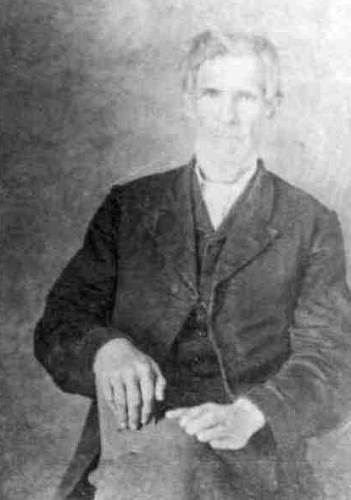
13 George Bear
Clyde Lee Jenkins recorded a couple of incidents involving my grandfather in his book Judge Jenkins History of Miller County Volume I which I will copy here:
Bear Trap Set
Jenkins: p. 236
George Bear, living south of the Osage River in the vicinity of the big bend of Dog Creek, being a strong Union man, viewed with pride the record of his six sons in the Union Armies.
Note: You can read the Civil War experiences of the six sons of George Bear at this page on our website.
His closest neighbor, John Martin, living approximately one mile eastwardly, having sons in the Confederate Armies, was a dedicated rebel (photo 14).

14 John Martin III
To say the least, during this time, these men were none too neighborly, but their boys, each having an eight year old son in the home, were very fond of each other. Often the Bear and Martin youths met, usually in the woods, secretly, where they discussed their mutual problems, earnestly, frankly, and honestly.
“My Pa is a rebel,” the Martin youth informed his playmate many times, for John Martin was leading a small band, bushwhacking south of the Osage River.
According to custom in that day, young Martin, in the log house of his father, slept in an attic room floored with loose planks. He slept above the room where John Martin met with the gang when planning raids upon the countryside.
Eavesdropping through a knot hole in a plank of the bedroom floor one night upon the proceedings in the room below, young Martin over heard the gang planning a raid upon George Bear’s farm the following evening.
The young boy didn’t like this at all, so very early the next morning, he was in the woods above the Bear home, desperately whistling for his young friend to come up. When at his side, Martin informed his playmate of the raid certain to occur following sunset, who would be in the gang, and the things they were going to take.
With the falling of dawn, on the ridge above the Bear home, a shrill whistling was heard, and the two boys were soon together.
“The raid is off,” young Martin said. “The men met last night at my Pa’s house, and they objected. They informed Pa of George Bear having six sons in the Union Army, and asked Pa what he thought their hides would be worth when the boys returned home? Pa hadn’t thought of that, so the raid was called off!”
A second anecdote involving the Bear family which Clyde Lee placed in his History of Miller County concerned a raid on the home of George Bear by Union soldiers who had been misinformed about his allegiance to the North:
Bear Farm Raided
Jenkins: p. 237
Eventually the Bear farm was raided by Union soldiers passing through Miller county. On June 5, 1862, Companies A,B,C and F, 13th Regiment Cavalry, Missouri State Militia, several hundred strong, Colonel Albert Sigel, commanding, rode into Tuscumbia, on their way to Waynesville. After crossing the Osage River, these cavalry companies, meeting old man Riggs, a person of secessionist tendencies, were informed by him to safely cross the county a scout would be needed. There were many rebels, and knowing them all, he could guide them safely through for a small fee; the Colonel graciously accepting his services (photo 15).
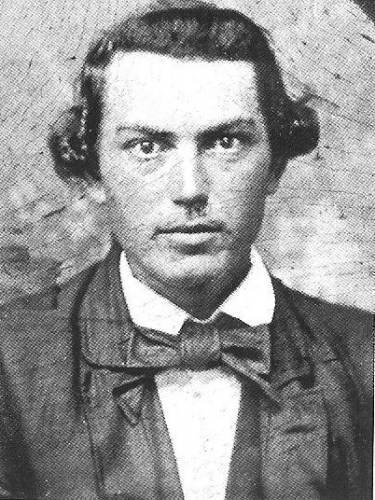
15 Owen Riggs
Moving down the trail, south of the Osage River, toward Capps’ Landing, Riggs informed the Colonel a strong Confederate by name of George Bear lived on a farm by the Dog Creek. Upon this information, the Colonel seized some of Bear’s livestock for sustenance.
The next morning George Bear rode into the Colonel’s camp at the breaking of dawn, presenting the officer the enlistment papers of his six sons in the Union Army.
Immediately, the Colonel paid him for his livestock taken in the previous day, and said, “I only wish I had one more hour to tarry. I would make a short trip;” old man Riggs having disappeared!
According to Clyde Lee Jenkins, Miller County suffered significant economic stress in the years after the Civil War. Not only had the war years caused intense feelings of anger among the populace which interfered with many aspects of commerce, but a nationwide depression also occurred after the war. One of the first evidences of economic recovery in Tuscumbia, the county seat, was the establishment of the Anchor Milling Company. You can read a brief history of this company written by Bamber Wright, great grandson of William Hauenstein Sr., who was the founder of the mill at this previous Progress Notes (photo 16).
The Anchor Mill first was located in the Gum Creek area about a mile west of Tuscumbia in 1872. In 1880 the mill was moved to Tuscumbia to the area called Goosebottom now known as Riverside Park. In 1894 it was moved down river about a half mile where it remained until 1949 when the feed mill was moved to the north side of Tuscumbia on Highway 52. Prior to that, in 1943, the hardware and farm supply store had been moved to the same location.
The story of the move from the riverside area in 1949 was told in an article in the Miller County Autogram which reveals some interesting information regarding the history of the mill. Below is copied that article:
Fond Memories Disappear as Old Mill Building Is Being Torn Down
Miller County Autogram Sentinel
Date approximately 1949
For the last few weeks, a crew of workmen, Norman Wyrick, Calvin Wyrick, Omer Goode, John McNeeley, Ronald Swanson and Roy Bear, under the supervision of Homer C. Wright of the Anchor Milling Company, has been tearing away a Miller County landmark in Tuscumbia, the old Anchor Roller Mill Building, which grew from a small beginning on the banks of the Osage River and which no doubt, brings back facts of interest and fond memories to the older people of this county (photos 17 - 20).

17 Homer Clay Wright

18 Anchor Roller Mill 1909 - C.B. Wright on right behind Wagon
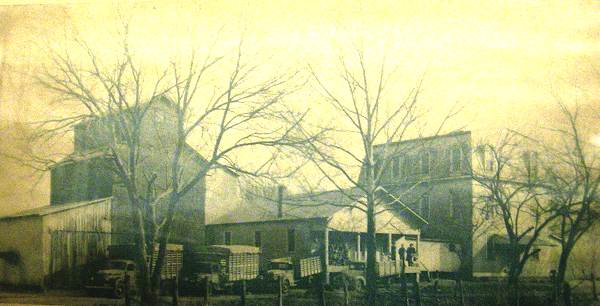
19 Anchor Mill - 1948
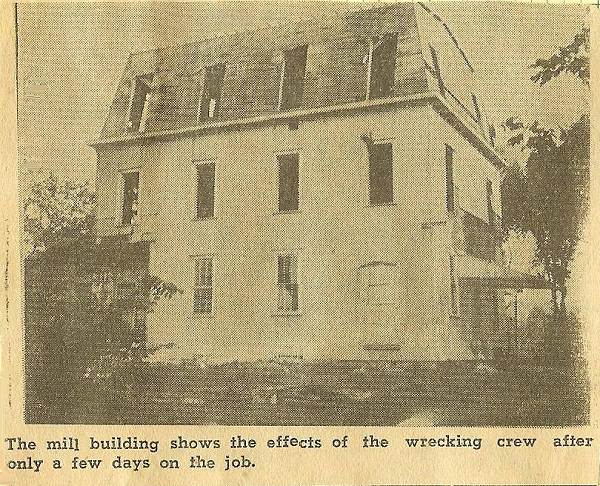
20 Anchor Roller Mill building partially Dismantled - 1949
Anchor Milling Company actually had its beginning about 1872 when William Hauenstein Sr. bought a saw and grist mill near the mouth of Gum Creek above Tuscumbia (photo 21).
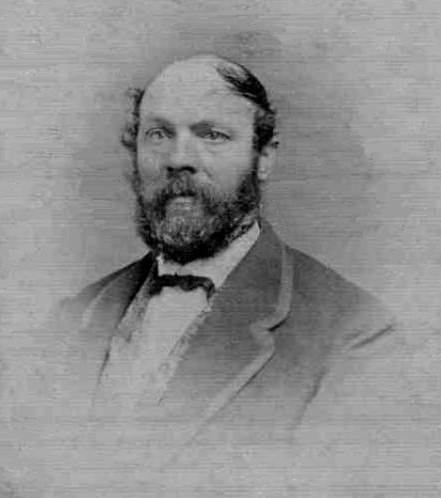
21 William Hauenstein Sr.
At that time the corn was ground on large stones or burrs (photo 22).
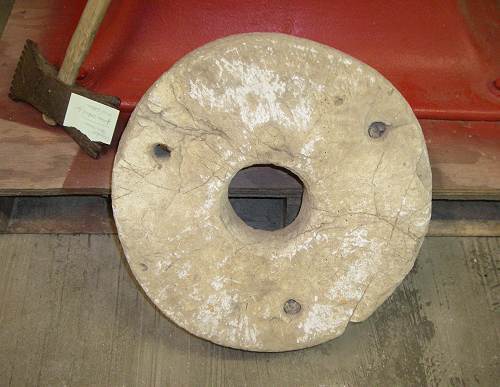
22 Old Anchor Mill Company Millstone
Because of the inconvenience of the location, the mill was moved to what is commonly known as Goose Bottom in Tuscumbia, when the two Hauenstein sons, Phil and William, became associated with the business. A short time later William sold his interests to Phil, who became president of the company (photos 23, 24 and 25).
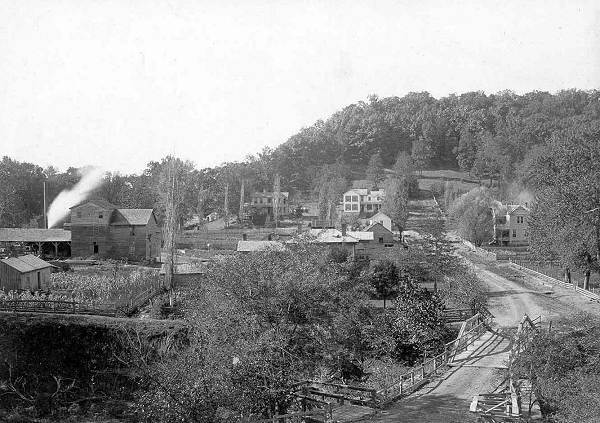
23 Anchor Mill in Goosebottom
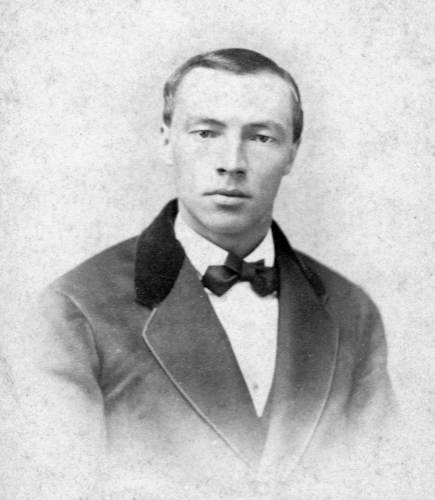
24 William H. Hauenstein Jr.
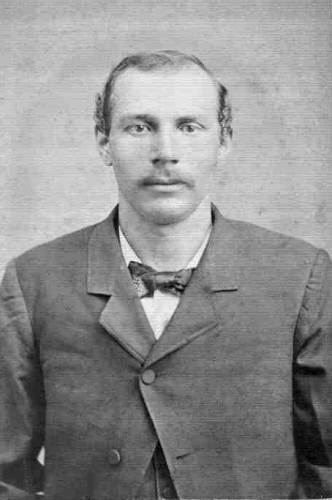
25 Phil Hauenstein
About this time, Captain R.M. Marshall, who was to have played an important part in the progress of business along the Osage, encouraged Mr. Hauenstein to install new steel rollers in the mill for a new process of making wheat flour. The rollers were bought in Indianapolis and brought to Tuscumbia by steam boat (photos 26 and 27).

26 Bob Marshall
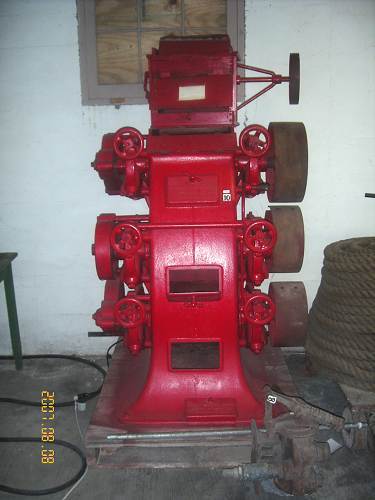
27 Roller Mill
Note: This roller mill is now displayed in our museum.
The milling business expanded with the river traffic, and in 1894 the mill was built in the "Cracker Neck" section at the east end of town (photo 28).
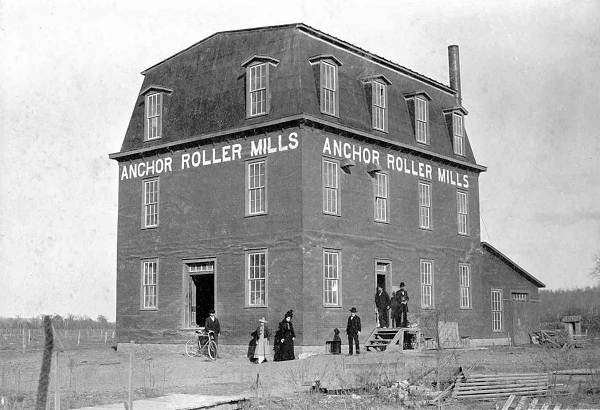
28 Roller Mill in Crackerneck
The new mill was well known for its grade of flour, and wagons came from miles around to wait their turn to have wheat ground into flour. The mill was in operation 24 hours a day in order to accommodate the many customers. The company was incorporated in 1897 with J.R. Wells as president (photo 29).

29 J.R. Wells
Each day the crew working in the heat of the mid summer sun makes the three story building with its metal siding appear a little shorter. Last week the men removed from the third story the big cylinder funnel duster which had been used to collect the dust and particles of dirt from the grain as it ran over the cleaner. On the duster were names written there when the mill was young. Some of the names were: T.C. Lawson, Wayne Hawken: 1939; William D. Bassman; Byron Hix, 1914; Irvin Small, 1911; Ed Wright; Charles Wright, 1914; Ida Hauenstein; Hortense Kallenbach; Nellie Fendorf; Lucy Wells; Paul Wright; Ella Fendorf; Pauline Kouns; Ethel Kallenbach; "Doll" Johnson; Bud Abbet; Sally Slote; Dotty Butterfield; Hannis Swanson, 1913; C.J. Mathews, 1913, who at that time was the miller; Pauline Webb; Del Willsman; Clarence Martin; Opie Swanson; Iris Johnson; Casper Bassman; F.H. Schlicht 1910; Fred Wright; Robert and Roger Stillwell, 1921; Bill Speedy; C.B. Kouns, 1910; A.J. Rowden; Guy Hix; Irwin Small; Paul Gene Shelton; R.E. Smith; James Barton, and Leslie Burks.
The second piece of the machinery on the third floor, which the wrecking crew had taken apart, was the wooden Plan Sifter. With its many vibrators and small trays of silk, the sifter served its purpose of helping to make tons of flour snow white for the approval of the customers.
Some of the work in wrecking the mill appears to progress slowly. This is due to the fact that the building was so well constructed. The support beams were notched and held in place by wooden pins.
On the first floor, the date 1895 was carved on a support post showing the water level of the Osage River flood in that particular year. That flood of 40 feet was talked about for many years until 1943 when the level of 48 feet caused the flood water to stand at the second floor of the Anchor Mill building.
The mud from that flood was never cleaned from the machinery, and the company decided to quit the flour milling business.
Homer Lee Wright of Tuscumbia, who was the miller for the company for many years, can recall many incidents through the time he worked for the concern. He could describe how the flood of 1943 not only damaged the mill but how it washed away the office building and caused the nearby Anchor lumber yard to collapse, and how another building used as a garage also was washed away in that famous flood of the Osage (photo 30).

30 Homer Lee Wright
The nearby elevator and warehouse were torn away in 1949 and used in the construction of the buildings on Highway 52 in Tuscumbia which now make up the Anchor Milling Company.
Within a few weeks only the old hardware and office building will remain in "Cracker Neck" to remember the stories when the first steamboat built for the company was the J.R. Wells which carried freight for the company (photo 31).
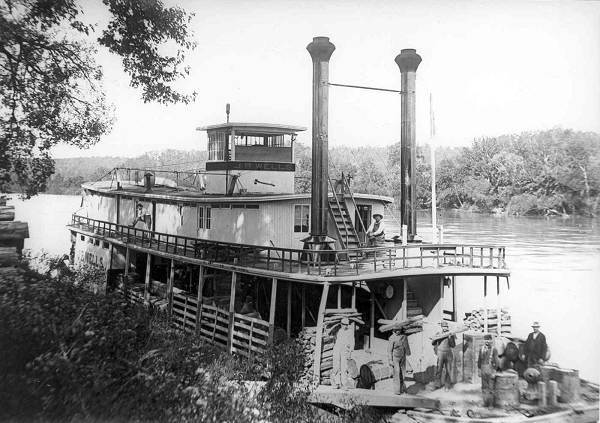
31 J.R. Wells Steamboat
After the sale of the J.R. Wells, the gasoline powered boat, the Ruth, was used and still later, the company built the boat the Homer C. Wright, which was named in honor of the son of the manager, C.B. Wright, who later became president and remained in the position until his death (photos 32, 33 and 34).
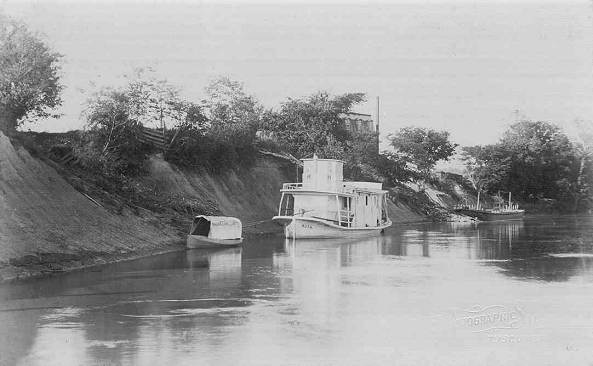
32 Gasoline Powered Ruth
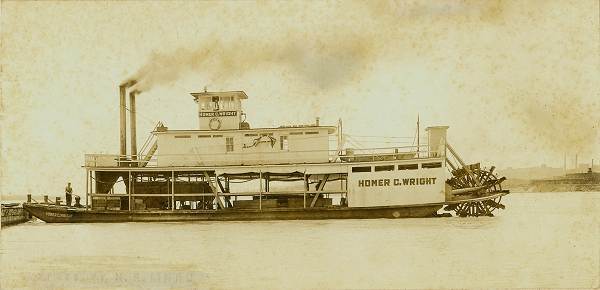
33 Homer C. Wright on Missouri River
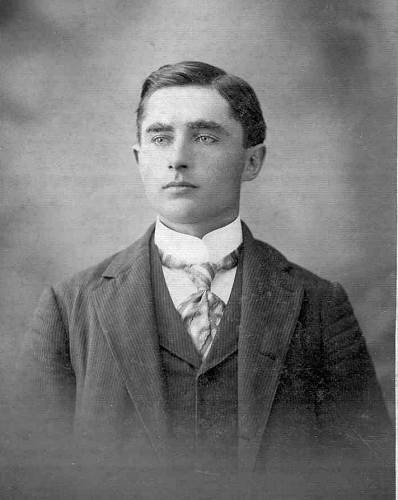
34 Clarence Boyce Wright
Homer C. Wright succeeded his father, Clarence Boyce Wright, as president of the company.
In 1943 the Anchor Milling Company rebuilt the lumber yard and a stone building housing hardware "on the hill" in Tuscumbia on Highway 52 (photo 35).
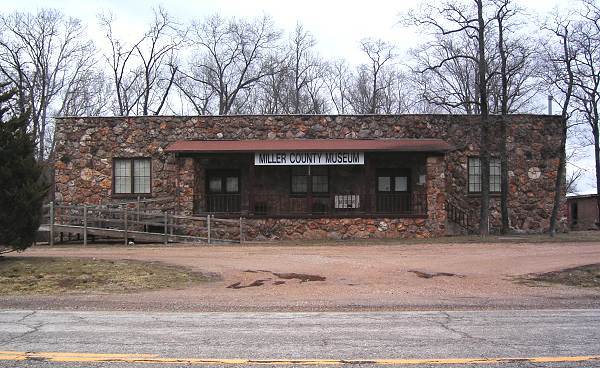
35 Anchor Mill Hardware Store now is our Museum
In 1949 the mill was moved from the river site to a location on the hill next to the stone hardware building. In 1950, 50 ton scales were completed (photo 36).

36 Anchor Mill on Highway 52, Top of Hill - Tuscumbia
Note: Since this article was written, the Anchor Milling Company closed and the buildings were removed for the construction of the new Miller County Courthouse and County office building.
The company's president has made the announcement that a part of the lumber salvaged from the building now being torn away will be used in the construction of a similar building in Eldon. It is planned that the building will be constructed on lots now being purchased from the Clark brothers (photo 37).
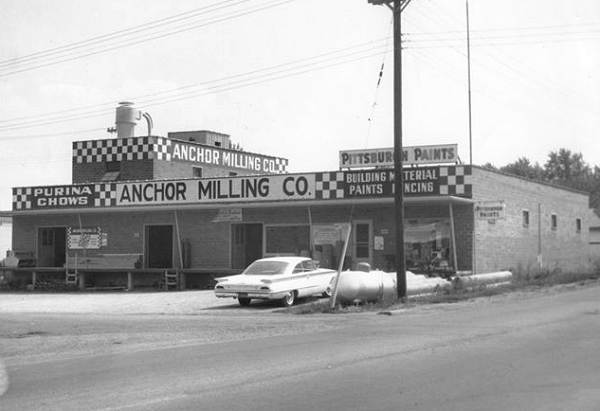
37 Anchor Mill - Eldon
In our museum we have a display devoted to the Anchor Milling Company. Some of the original items found there are the old roller mill (see photo 27 above), C.B.Wright’s rocking chair, the original cash register and an outstandingly high quality photo of the old mill on the river (photos 38, 39 and 40).
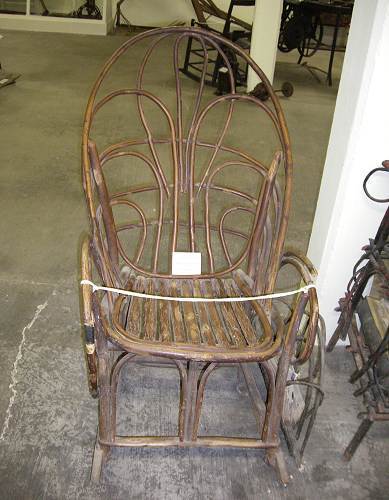
38 C.B. Wright's Rocking Chair

39 Anchor Mill Cash Register

40 Anchor Mill on River
As many others I have occasion to cross the Missouri River at Jefferson City quite often. Quite a lot of history is associated with the area of the bridge which I found in the captions of a couple of framed photos hanging in the dining room of the Heisinger’s Retirement Center on Main Street which overlooks this area.
Hibernia Landing
In this reproduction of a watercolor painting by Ron Hediger of Columbia, is depicted a scene, as viewed from Hibernia Landing, later named Cedar City, in Calloway County looking southward across the Missouri River into the new and booming Jefferson City waterfront of 1895.
The painting depicts the Steamer J.W. Spencer which provided ferry service in the Jefferson City area for almost a decade before the completion of the first bridge at that point and in the near background is a depiction of the first bridge completed in 1895. Also displayed are the J.C. Water Tower completed in 1892, St. Peter’s Catholic Church and the old Capitol Building which burned in 1911.
Hibernia Landing was the site of the earliest keelboat and steamboat landing in the area. The first record of a steamboat license for the purpose of ferrying people and goods between Hibernia and Jefferson City was the application of William B. Scott in 1835 shortly after his land patent in 1834 which included the site of Hibernia and Hibernia landing.
Missouri River Bridge at Jefferson City
On January 29, 1894, a group of Jefferson City investors received approval of letters of incorporation under the business name, Jefferson City Bridge and Transit Company, created for the sole purpose of building the first bridge at Jefferson City to span the Missouri river. Being a private business venture, tolls were collected for individuals and vehicles crossing that bridge. The bridge was completed and was dedicated in June of 1896. Initially, a horse drawn carriage “bus” service was established to transport individuals from Cedar City and North Jefferson to downtown Jefferson City. Later, the horse drawn “bus” was replaced by an electric trolley that served the Jefferson City uptown district and westward as far as Dix road. The bridge venture was never very profitable and was sold, in 1925, to a group of investors from St. Louis and in 1932 the bridge was repurchased by local investors and given to the Missouri State Highway Department, with the last toll being collected on October 15, 1932. This bridge was replaced by a newer and wider bridge completed in 1955 and the earlier bridge was torn down soon thereafter.
That’s all for this week.
 Joe Pryor
Previous article links are in a dropdown menu at the top of all of the pages.
|

